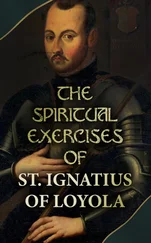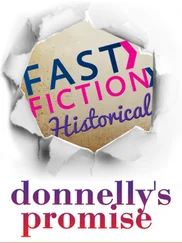Ignatius Donnelly - Antediluvian world
Здесь есть возможность читать онлайн «Ignatius Donnelly - Antediluvian world» весь текст электронной книги совершенно бесплатно (целиком полную версию без сокращений). В некоторых случаях можно слушать аудио, скачать через торрент в формате fb2 и присутствует краткое содержание. Жанр: Старинная литература, на русском языке. Описание произведения, (предисловие) а так же отзывы посетителей доступны на портале библиотеки ЛибКат.
- Название:Antediluvian world
- Автор:
- Жанр:
- Год:неизвестен
- ISBN:нет данных
- Рейтинг книги:5 / 5. Голосов: 1
-
Избранное:Добавить в избранное
- Отзывы:
-
Ваша оценка:
- 100
- 1
- 2
- 3
- 4
- 5
Antediluvian world: краткое содержание, описание и аннотация
Предлагаем к чтению аннотацию, описание, краткое содержание или предисловие (зависит от того, что написал сам автор книги «Antediluvian world»). Если вы не нашли необходимую информацию о книге — напишите в комментариях, мы постараемся отыскать её.
Antediluvian world — читать онлайн бесплатно полную книгу (весь текст) целиком
Ниже представлен текст книги, разбитый по страницам. Система сохранения места последней прочитанной страницы, позволяет с удобством читать онлайн бесплатно книгу «Antediluvian world», без необходимости каждый раз заново искать на чём Вы остановились. Поставьте закладку, и сможете в любой момент перейти на страницу, на которой закончили чтение.
Интервал:
Закладка:
In the mounds we find many works of copper but none of bronze. This may indicate one of two things: either the colonies which settled the Mississippi Valley may have left Atlantis prior to the discovery of the art of manufacturing bronze, by mixing one part of tin with nine parts of copper, or, which is more probable, the manufactures of the Mound Builders may have been made on the spot; and as they had no tin within their territory they used copper alone, except, it may be, for such tools as were needed to carve stone, and these, perhaps, were hardened with tin. It is known that the Mexicans possessed the art of manufacturing true bronze; and the intercourse which evidently existed between Mexico and the Mississippi Valley, as proved by the presence of implements of obsidian in the mounds of Ohio, renders it probable that the same commerce which brought them obsidian brought them also small quantities of tin, or tin-hardened copper implements necessary for their sculptures.
The proofs, then, of the connection of the Mound Builders with Atlantis are:
1. Their race identity with the nations of Central America who possessed Flood legends, and whose traditions all point to an eastern, over-sea origin; while the many evidences of their race identity with the ancient Peruvians indicate that they were part of one great movement of the human race, extending from the Andes to Lake Superior, and, as I believe, from Atlantis to India.
2. The similarity of their civilization, and their works of stone and bronze, with the civilization of the Bronze Age in Europe.
3. The presence of great truncated mounds, kindred to the pyramids of Central America, Mexico, Egypt, and India.
4. The representation of tropical animals, which point to an intercourse with the regions around the Gulf of Mexico, where the Atlanteans were colonized.
5. The fact that the settlements of the Mound Builders were confined to the valley of the Mississippi, and were apparently densest at those points where a population advancing up that, stream would first reach high, healthy, and fertile lands.
6. The hostile nations which attacked them came from the north; and when the Mound Builders could no longer hold the country, or when Atlantis stink in the sea, they retreated in the direction whence they came, and fell back upon their kindred races in Central America, as the Roman troops in Gaul and Britain drew southward upon the destruction of Rome.
7. The Natchez Indians, who are supposed to have descended from the Mound Builders, kept a perpetual fire burning before an altar, watched by old men who were a sort of priesthood, as in Europe.
8. If the tablet said to have been found in a mound near Davenport, Iowa, is genuine, which appears probable, the Mound Builders must either have possessed an alphabet, or have held intercourse with some people who did. (See “North Americans of Antiquity,” p. 38.) This singular relic exhibits what appears to be a sacrificial mound with a fire upon it; over it are the sun, moon, and stars, and above these a mass of hieroglyphics which bear some resemblance to the letters of European alphabets, and especially to that unknown alphabet which appears upon the inscribed bronze celt found near Rome. (See p. 258 of this work.) For instance, one of the letters on the celt is this, ###; on the Davenport tablet we find this sign, ###; on the celt we have ###; on the tablet, ###; on the celt we have ###; on the tablet, ###.
CHAPTER IV.
THE IBERIAN COLONIES OF ATLANTIS
At the farthest point in the past to which human knowledge extends a race called Iberian inhabited the entire peninsula of Spain, from the Mediterranean to the Pyrenees. They also extended over the southern part of Gaul as far as the Rhone.
“It is thought that the Iberians from Atlantis and the north-west part of Africa,” says Winchell, “settled in the Southwest of Europe at a period earlier than the settlement of the Egyptians in the north-east of Africa. The Iberians spread themselves over Spain, Gaul, and the British Islands as early as 4000 or 5000 B.C. . . . The fourth dynasty (of the Egyptians), according to Brugsch, dates from about 3500 B.C. At this time the Iberians had become sufficiently powerful to attempt the conquest of the known world.” (“Preadamites,” p. 443.) “The Libyan-Amazons of Diodorus—that is to say, the Libyans of the Iberian race—must be identified with the Libyans with brown and grizzly skin, of whom Brugsch has already pointed out the representations figured on the Egyptian monuments of the fourth dynasty.” (Ibid.) The Iberians, known as Sicanes, colonized Sicily in the ancient days.
They were the original settlers in Italy and Sardinia. They are probably the source of the dark-haired stock in Norway and Sweden. Bodichon claims that the Iberians embraced the Ligurians, Cantabrians, Asturians, and Aquitanians. Strabo says, speaking of the Turduli and Turdetani, “they are the most cultivated of all the Iberians; they employ the art of writing, and have written books containing memorials of ancient times, and also poems and laws set in verse, for which they claim an antiquity of six thousand years.” (Strabo, lib. iii., p. 139.) The Iberians are represented to-day by the Basques.
The Basque are “of middle size, compactly built, robust and agile, of a darker complexion than the Spaniards, with gray eyes and black hair.
They are simple but proud, impetuous, merry, and hospitable. The women are beautiful, skilful in performing men’s work, and remarkable for their vivacity and grace. The Basques are much attached to dancing, and are very fond of the music of the bagpipe.” (“New American Cyclopaedia,”
art. Basques.)
“According to Paul Broca their language stands quite alone, or has mere analogies with the American type. Of all Europeans, we must provisionally hold the Basques to be the oldest inhabitants of our quarter of the world.” (Peschel, “Races of Men,” p. 501.) The Basque language—the Euscara—”has some common traits with the Magyar, Osmanli, and other dialects of the Altai family, as, for instance, with the Finnic on the old continent, as well as the Algonquin-Lenape language and some others in America.” (“New American Cyclopaedia,” art. Basques.)
Duponceau says of the Basque tongue:
“This language, preserved in a corner of Europe by a few thousand mountaineers, is the sole remaining fragment of, perhaps, a hundred dialects constructed on the same plan, which probably existed and were universally spoken at a remote period in that quarter of the world. Like the bones of the mammoth, it remains a monument of the destruction produced by a succession of ages. It stands single and alone of its kind, surrounded by idioms that have no affinity with it.”
We have seen them settling, in the earliest ages, in Ireland. They also formed the base of the dark-haired population of England and Scotland.
They seem to have race affinities with the Berbers, on the Mediterranean coast of Africa.
Dr. Bodichon, for fifteen years a surgeon in Algiers, says: “Persons who have inhabited Brittany, and then go to Algeria, are struck with the resemblance between the ancient Armoricans (the Bretons) and the Cabyles (of Algiers). In fact, the moral and physical character is identical. The Breton of pure blood has a long head, light yellow complexion of bistre tinge, eyes black or brown, stature short, and the black hair of the Cabyle. Like him, he instinctively hates strangers; in both are the same perverseness and obstinacy, same endurance of fatigue, same love of independence, same inflexion of the voice, same expression of feelings. Listen to a Cabyle speaking his native tongue, and you will think you bear a Breton talking Celtic.”
The Bretons, he tells us, form a strong contrast to the people around them, who are “Celts of tall stature, with blue eyes, white skins, and blond hair: they are communicative, impetuous, versatile; they pass rapidly from courage to despair. The Bretons are entirely different: they are taciturn, hold strongly to their ideas and usages, are persevering and melancholic; in a word, both in morale and physique they present the type of a southern race—of the Atlanteans.”
Читать дальшеИнтервал:
Закладка:
Похожие книги на «Antediluvian world»
Представляем Вашему вниманию похожие книги на «Antediluvian world» списком для выбора. Мы отобрали схожую по названию и смыслу литературу в надежде предоставить читателям больше вариантов отыскать новые, интересные, ещё непрочитанные произведения.
Обсуждение, отзывы о книге «Antediluvian world» и просто собственные мнения читателей. Оставьте ваши комментарии, напишите, что Вы думаете о произведении, его смысле или главных героях. Укажите что конкретно понравилось, а что нет, и почему Вы так считаете.












